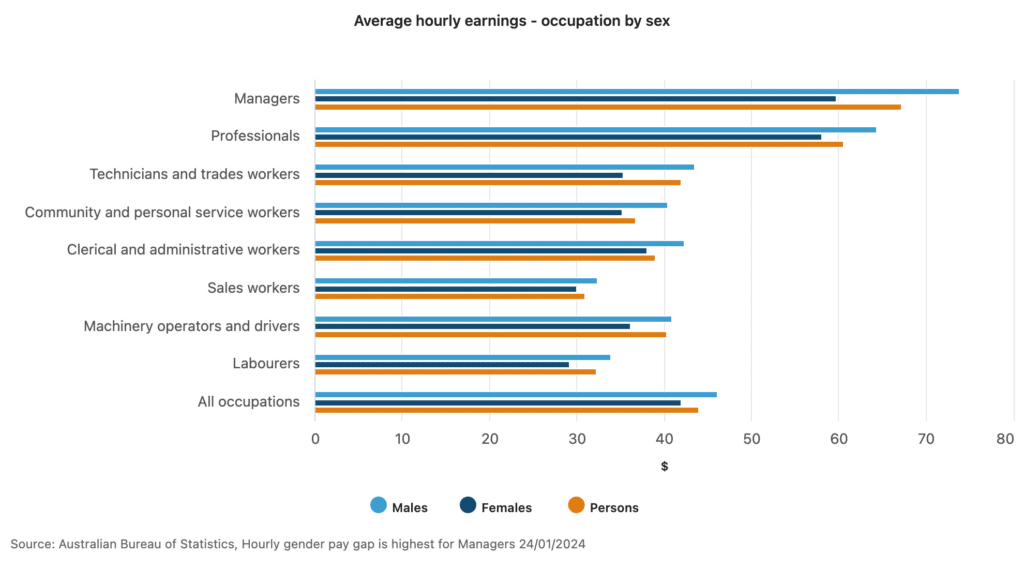There is a 19 per cent gender gap in hourly earnings between men and women in managerial positions, according to new data from the Australian Bureau of Statistics.
Men continue to earn more per hour than women in all eight major occupation groups, with those in sales experiencing the lowest pay gap, at 7 per cent.
For those women in the “managerial” category, the pay gap is seeing their male counterparts earning $14.10 more, every hour.

Bjorn Jarvis, who heads up the ABS’ labour statistics, said that hourly earnings comparisons are a useful tool for considering the complexity of the gender pay gap. They are particularly useful in understanding gender pay differences beyond weekly earnings measures, given women are more likely than men to work part-time.
“The majority of all part-time employees are women (69 per cent) with higher average weekly earnings than part-time men ($817 compared to $759). This reflects the greater use of part-time working arrangements by women in higher paying jobs, compared to men,” he said.
The ABS figures are based on their survey of employee earnings and hours, conducted every two years, using May 2023 as a reference period.
While managerial positions have the highest gender difference of the eight categories, those in sales experience the narrowest gap, at seven per cent. There is a 10 per cent gap between the hourly earnings of professionals.
Overall, managers enjoy the highest average hourly earnings ($67.20), followed by professionals ($60.60). Sales workers and Labourers receive the lowest hourly rate of occupation categories ($30.90 and $32.20). The overall hourly average is $44. Median weekly earnings were at $1,300, with men earning $1,509 and women $1,130.
The survey also found that Men were more likely to have their pay set by an individual arrangement (45 per cent), while a collective agreement was the most common method for women (38 per cent).


